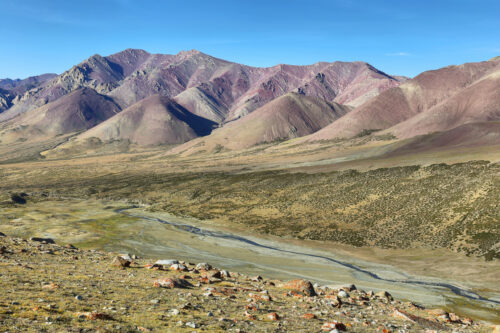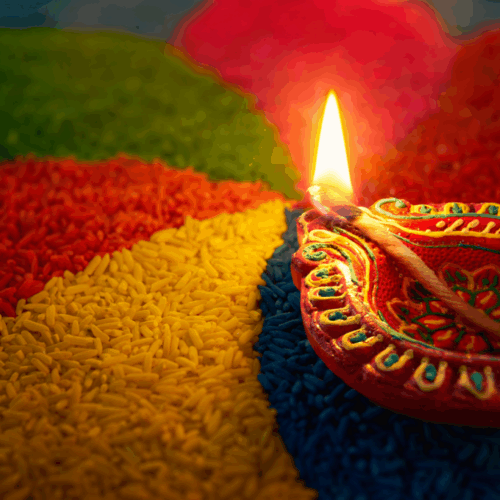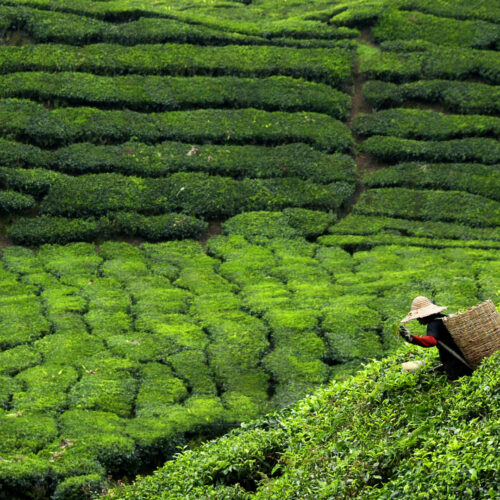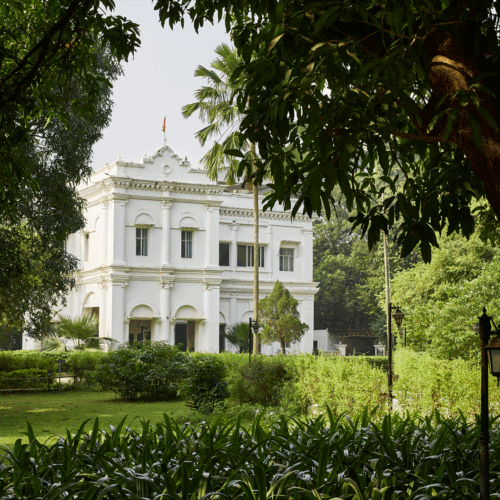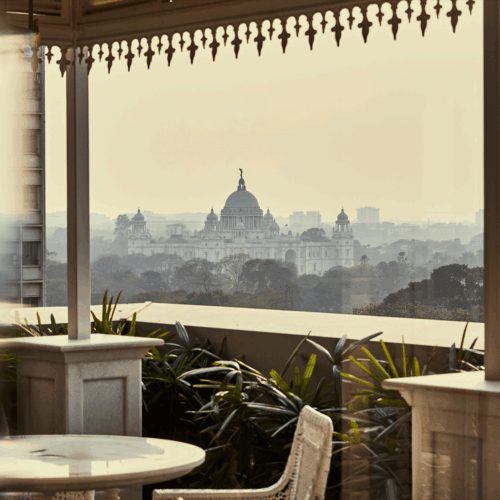Nestled in Ladakh in Northern India, Hemis National Park is a sprawling 4,400-square-kilometer sanctuary of untamed beauty. Established in 1981, the park boasts dramatic landscapes of arid mountains and verdant valleys, serving as a haven for rare and endangered species, most notably the enigmatic snow leopard.
From exhilarating hikes unveiling panoramic vistas to spiritual sojourns at age-old monasteries, there is no shortage of ways to discover the breathtaking beauty of the park.
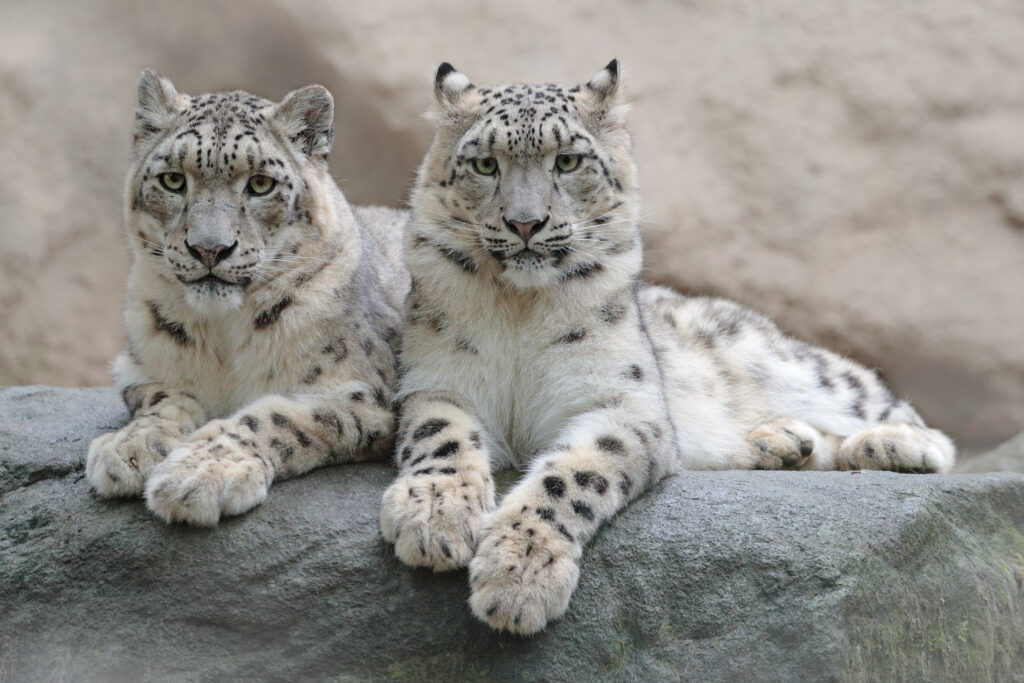
Seek out snow leopards
The park is home to the highest density of snow leopards in any protected area worldwide, making it one of the best places to go in search of the elusive big cat. Beautifully patterned with distinctive dark rosettes and spots on gray and cream-coloured fur, snow leopards seamlessly blend into the rocky and snowy landscape which can make them difficult to spot. Visit during the winter months to increase the chance of seeing these high-altitude acrobats as they descend into the valleys in search of food.
Keep an eye out for the other mammals that also call the region their home and the snow leopard their predator. Encounter bharals showcasing their distinctive horns, witness the grace of the Eurasian lynx, marvel at the wild Asiatic ibex, and catch a glimpse of the rare Himalayan brown bear.
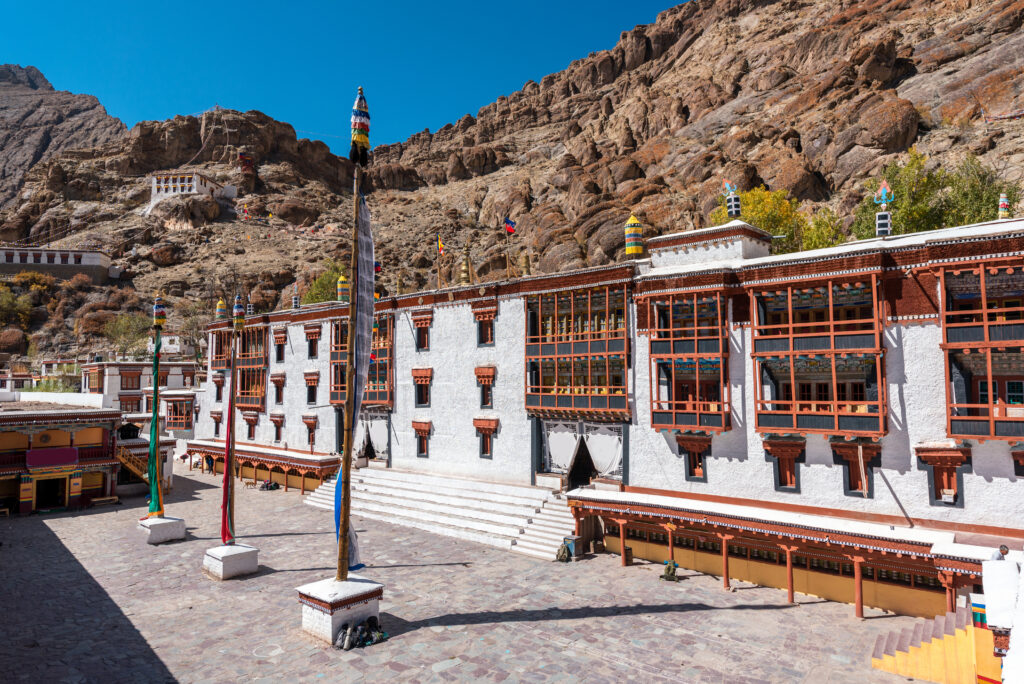
Visit a Buddhist monastery
The Hemis Monastery, or gompa, for which the park was named, is thought to have existed before the 11th century, however was officially re-established in the mid-17th century as the main seat of the Kagyu lineage of Buddhism.
Today, visitors to the park can wander through the giant gates into the open courtyard and beyond, admiring the Tibetan-style architecture throughout. The two prayer halls, supported by impressive pillars, are adorned with beautiful paintings and murals depicting notable scenes from the life of Buddha and other important Buddhist figures. The monastery is also home to statues of an eight-meter-tall Padmasambhava, a gold and copper Lord Buddha and Stagsan Raspa, founder of the monastery, seated on a throne.
The best time to visit the gompa is during the annual Hemis Festival which falls on the 10th day of the fifth month of the Tibetan calendar, usually June or July on the Gregorian calendar. Here, monks in vibrant dress perform the Cham dances that traditionally depict Buddhist myths to traditional music on cymbals, drums and horns. They also showcase thangkas (old Buddhist paintings), sell handicrafts by local artisans and serve delicious Ladakhi cuisine.
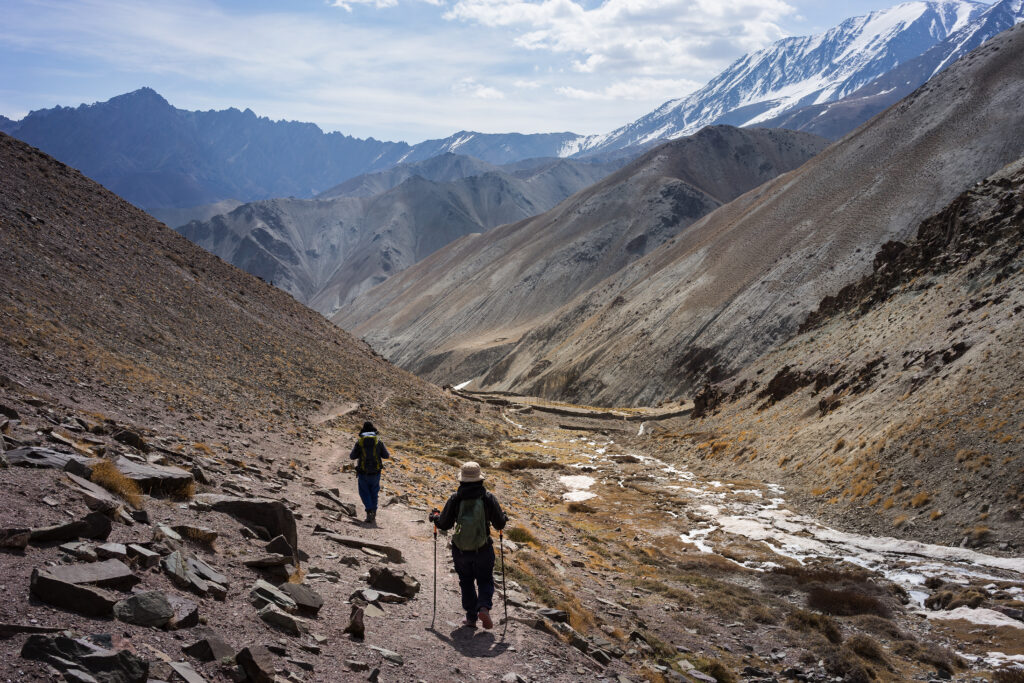
Hike across the park
During the summer months, embark on hikes throughout the park and soak in sweeping views across the arid Indian Himalayas while breathing in the crisp mountain air.
For a short yet rewarding day hike, the trek up to Gotsang Gompa is around an hour to hike uphill from Hemis Monastery. Tucked into the hillside, Gotsang comprises two main temple buildings, including the mountain cave shrine where the enlightened Tibetan lama and Tantric master Gyalwang Gotsang once mediated in the 13th century, accessible through an entryway covered with colorful murals.
For experienced hikers who want to feel a part of the Himalayan wilderness, the Markha Valley trek is a popular and impressive option. Traverse across wild mountain passes, spectacular gorges, rushing rivers and homely local villages across six to eight days, where you’re more likely to encounter Tibetan shepherds than other travelers. Each day will be spent trekking from one village to another where the next homestay awaits, offering travelers the opportunity to fully immerse themselves in Ladakhi culture.
Image credit: Snow Leopards Ondrej Prosicky © Shutterstock; Hemis Temple Monastery martinho Smart © Shutterstock; Markha Valley trek xerazed © Shutterstock.
